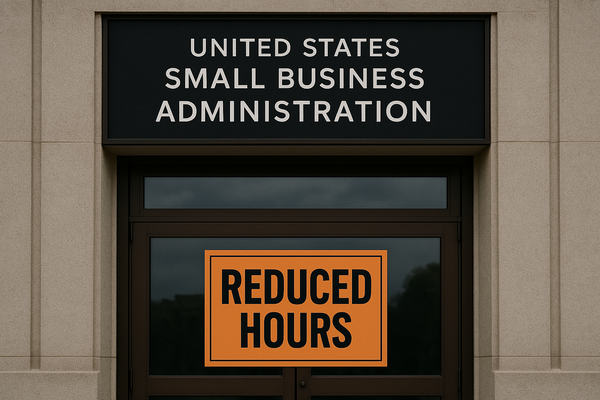Down Rounds and Recaps Part 1 — What, Why, When

Welcome to part one of our series on down rounds and recaps:
- Part 1: A Guide to Down Rounds and Recaps <- You are here
- Part 2: Managing Your Key Stakeholders
- Part 3: A Deep Dive Into Down Rounds
- Part 4: Navigating the Startup Recap
Let’s get into it.
What do you do when the path to your next round of funding is no longer clear?
As a founder, you will likely hit a funding roadblock at some point in your startup journey. More than 50% of Series A and B-stage startups fail to raise their next round of funding.
These are perilous and emotional moments. You’re facing high stakes, differing points of view from investors and advisors, and a race against time to find the best path forward.
To successfully navigate funding challenges, you need access to every tool in your toolbox. Understanding how to navigate down rounds and recaps can help you stay in control of your startup and live to fight another day.
Make no mistake. Down rounds and recaps can take a heavy emotional toll on a founder. They generally have significant financial repercussions for investors, founders, and employees. Fear and greed, two primary drivers of human behavior, may collide as you fight to save your startup.
They can also be expensive as you navigate complex legal considerations.
In this series, I’ll break the concepts down and help you navigate the challenges ahead. Regardless of how you feel about down rounds and recaps, these should be tools in your toolbox.
What Happened?
There are plenty of reasons startups reach a point where raising additional cash is seemingly impossible.
You may have been unable to execute the plan you promised your investors. When you start missing milestones and burning cash faster than planned, investors will question the venture-scale opportunity of your startup. They will also begin to doubt your ability to execute the plan required to get back on track.
Even with flawless execution, macro events can shift the ground beneath your feet.
- 📉 One poorly received IPO can drive entire sectors out of favor with investors.
- 💸 Rising interest rates will pull limited partner dollars out of VC funds, compressing startup valuations.
- 🏧 When banks get nervous, lines of credit get smaller, and covenants get tougher.
Regardless of the reasons, suddenly, your cap table’s preference stack and your last post-money valuation loom over investors’ funding decisions.
Why execute a down round or recap?
You raise a down round or execute a recap because you believe fresh funding will give you the cash runway you need to get back on the path to Default Investable.
This is a critical point.
Down rounds and recaps can be very difficult to execute.
Down rounds and recaps can dramatically limit, or even eliminate, the potential for founders to realize any economic value from their hard work.
If a venture-scale outcome is not likely, it’s crucial that you consider other options.
Perhaps you should pivot to profitability to find your path to Default Alive. Sometimes, selling or winding down your startup is the right decision.
Recaps and down rounds should be in your toolbox. But, like all tools, they don’t solve every problem.
The Down Round
As the name implies, a down round raises additional equity at a valuation lower than your last post-money valuation. There are two obvious negative implications to a down round.
- ⬇️ Raising at a lower valuation will dilute the ownership of nonparticipating investors, founders, and their teams.
- 🛑 A down round creates signaling problems that can make attracting and retaining talent challenging while maintaining interest within the investor community.
These are not insurmountable challenges, as we’ll discuss in this series.
A down round is not a recap. It’s simply raising at a lower valuation and dealing with the dilution and signaling issues it creates.
But the reality is, most down rounds include some form of a recap.
The Recap
A recapitalization, aka a recap, refers to restructuring a startup’s equity and/or debt to improve the startup’s financial health and prospects for securing additional funding.
A recap can include:
- 🏦 Converting debt to equity to improve the balance sheet.
- 🧮 Changing the terms of existing preferred shares to make it easier to attract outside investors and improve future outcomes for founders and employees.
- 🪙 Issuing new classes of preferred shares with stronger rights and higher preferences, increasing the incentive for further investment.
Recaps are often done collaboratively with the support of your existing investors. With effective, clear communication, you may be able to get everyone aligned around one or more critical concepts:
- ➡️ Despite some headwinds, there is still the potential for a venture-scale outcome in the future.
- ➡️ With a longer runway, you may find a soft landing through M&A that preserves your investor’s investment and possibly provides a modest return.
- ➡️ Investors can preserve their reputation as founder-friendly while gaining increased investor protections.
But as you can imagine, changing the rights of existing investors can be complex and contentious.
There may be a split between your investors as to the best path forward. Your investors are primarily responsible for their own venture fund as they try to deliver strong returns to their limited partners. Remember that they each may be dealing with dramatically different challenges in their portfolios. This dynamic will impact how they respond to your desire to execute a recap as you fight to save your startup.
It’s also possible that none of your existing investors want to participate in another round of investment. This situation will require you to seek an outside investor who may demand onerous changes to your cap table to improve the prospect of acceptable future returns.
You may have heard of pay-to-play and cram downs, which can come into play in these situations. We’ll cover these topics as well later in the series.
Managing the Process
Before we get into the specifics of executing these tactics, in the next post, we will focus on how best to manage your investors, employees, and other key stakeholders to try to achieve your goals. We’ll talk about communication strategy, game theory, and keeping your lawyers close throughout the process to avoid tripping yourself up at just the wrong time.




